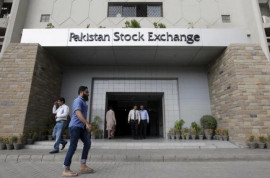
Pakistan is facing macroeconomic challenges including subdued economic activities and high inflation. However, the domestic banking sector is expected to stay disinfected and continue to make robust profit in the wake of risk-free lending to the cash-strapped government at significantly high rates.
The State Bank of Pakistan (SBP), in its mid-year (Jan-Jun 2023) performance review of the banking sector released on Monday, said that the performance of the banking sector in second half (Jul-Dec) of 2023 depended on the operating environment and evolving policy stance.
“The macroeconomic environment remains challenging primarily due to subdued economic activity and elevated inflation. Moreover, as a result of stabilisation measures, domestic financial conditions have considerably tightened.”
However, the banking sector is expected to continue its steady performance. “Major expansion in balance sheet is likely to be driven by investments (in government’s debt securities) owing to expected borrowing needs of the government.”
Read SIFC expectations and reality check
Advances to the private sector are also expected to show a seasonal uptick towards the end of December 2023, “as credit demand from sectors such as textile and sugar (usually) increases in fourth quarter (Oct-Dec),” the central bank said.
The review covers results of the 12th wave of Systemic Risk Survey (SRS) (July-23), which suggest that the key potential risks faced by the financial system include foreign exchange risks, increasing domestic inflation and political uncertainty.
“The respondents, however, expressed confidence in the stability of the financial system and ability of regulators,” the SBP said.
“Operating performance of the banking sector is likely to remain firm as the impact of increase in interest rates will continue to translate into returns on earning assets in the coming months.”
However, high interest expenses may keep earnings under check.
Overall, the economic stabilisation policy to contain aggregate demand and stressed financial conditions could involve credit risk concerns for banks. However, “banks’ asset quality is likely to remain firm, as their major lending is tilted towards corporate borrowers, which have better creditworthiness and cushions to withstand economic shocks.”
“However, the banking sector’s exposure to the government remains high, which demands earnest measures to reduce reliance on the banking sector for fiscal needs.”
The results of the latest macro stress tests also suggest that the banking sector, in general, and the large important banks, in particular, are expected to show resilience to withstand the assumed “severe macroeconomic shocks over the projected period of two years.” The “banking sector’s balance sheet expanded by 14% during the first half of calendar year 2023. The expansion in asset base was mainly driven by investments in government securities.”
Published in The Express Tribune, September 19th, 2023.
Like Business on Facebook, follow @TribuneBiz on Twitter to stay informed and join in the conversation.





1731588327-0/BeFunky-collage-(59)1731588327-0-165x106.webp)
















COMMENTS
Comments are moderated and generally will be posted if they are on-topic and not abusive.
For more information, please see our Comments FAQ